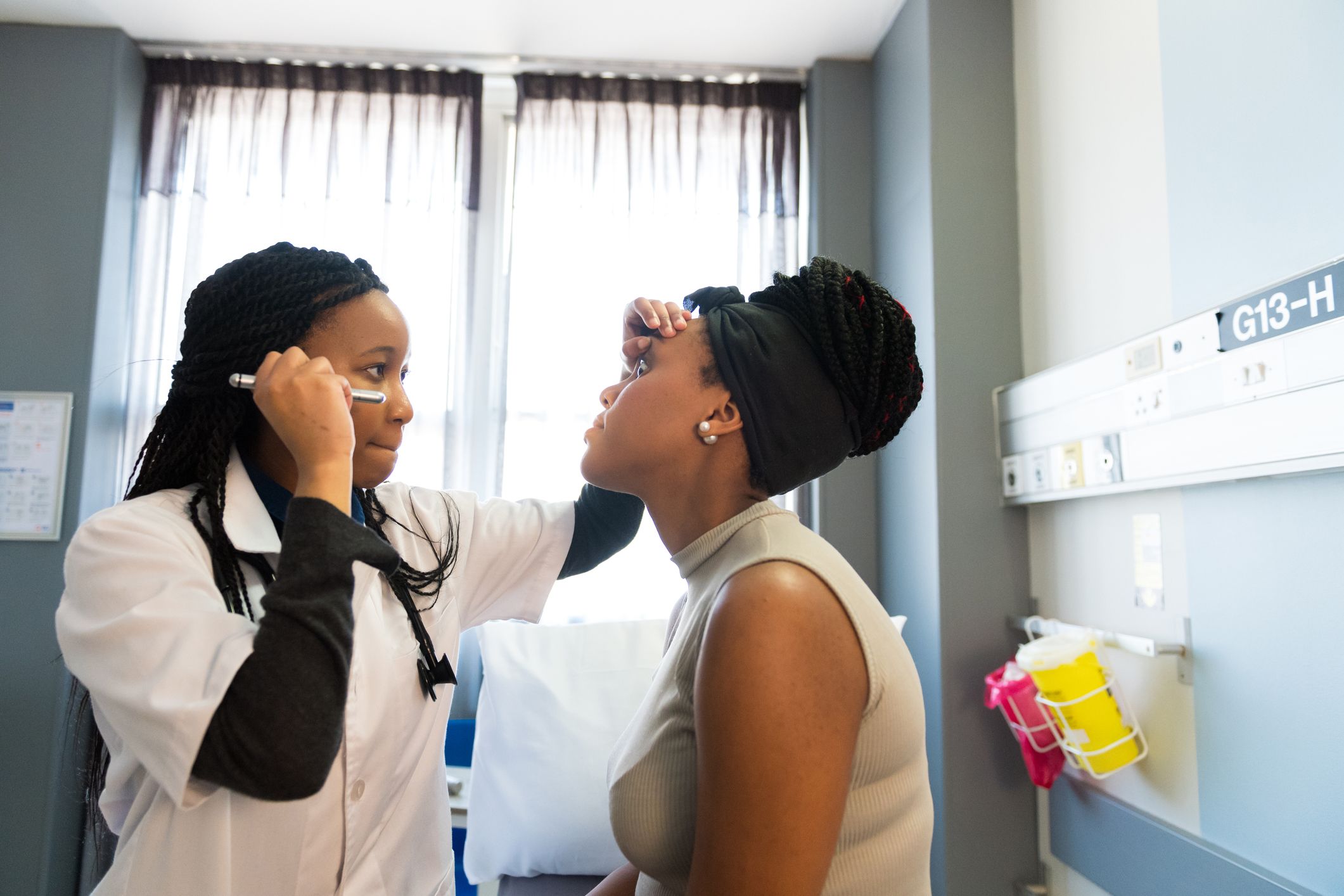Updated on September 26, 2023
Diabetic macular edema (DME) is a type of diabetic eye disease. It occurs when blood vessels leak into the part of the eye called the macula. This causes the macula to become swollen with fluid, resulting in blurred central vision and other vision problems.
DME is a complication of another type of diabetic eye disease called diabetic retinopathy. Diabetic retinopathy occurs as high blood glucose levels cause damage to the blood vessels inside the eyeball. DME can happen at any stage of diabetic retinopathy—even the early stages—and a person may have DME before they have been diagnosed with diabetic retinopathy.
Regular eye exams are an essential part of healthcare for anyone living with diabetes. Exams are the key to identifying and treating diabetic eye disease as early as possible. DME and diabetic retinopathy can cause permanent damage to the eyes, and in some cases, it can cause enough damage that a person will be legally blind.
What is the treatment for diabetic macular edema?
Diabetic macular edema cannot be cured, but it can be treated. Improving diabetes management is an essential part of treatment for DME and other types of diabetic eye disease, and this will be a part of every treatment plan.
The main treatment for DME is anti-VEGF therapy. This is a medication that is injected into the eye. It reduces swelling and stabilizes vision—and in some cases, it may improve vision that has been impaired by DME.
In addition to anti-VEGF therapy, a treatment plan may also include laser surgery, injections of corticosteroid medications, and working with a low vision specialist to adapt to changes in vision.
How anti-VEGF therapy works
DME occurs as a result of leaky, abnormal blood vessels that can form inside the eyes when a person has diabetic retinopathy. These leaky, abnormal blood vessels begin to grow when existing blood vessels inside the eyes become damaged by elevated blood glucose levels. A key component in this process is a protein called vascular endothelial growth factor (VEGF).
Anti-VEGF medications work by blocking this protein. Blocking VEGF in the eyes stops more fluid from leaking and accumulating into the eye. This allows the eye to clear out the fluid that has accumulated.
What to expect from anti-VEGF injections
Anti-VEGF medications are injected directly into the eye with a needle—and while this sounds intimidating, the procedure is quick, it typically causes minimal discomfort, and a person will not be able to see the needle when the injection is administered.
Here’s a look at what to expect from an appointment for anti-VEGF therapy:
- An injection takes only a few seconds, but an appointment typically lasts between 10 and 15 minutes. The majority of the appointment time is spent on steps that help ensure a person’s comfort while receiving the injection.
- Before the injection is given, the eye is cleaned with a sterilizing wash. This helps reduce the risk of infection. Your provider may also use eye drops to dilate the pupils.
- A numbing agent will be applied to the eye before the injection is given. Numbing the eye helps minimize pain—in fact, most patients do not feel pain, and instead describe a feeling of pressure against the eye during the injection.
- An eyelid clip may be used to keep the eye open for the injection.
- The injection site will be marked with a special tool. The injection is typically given in the white part of the eye.
- After the injection is given, the eye will be rinsed with sterile water.
- Vision will be assessed after the injection
If you are nervous about receiving an injection, tell your healthcare provider. Anti-VEGF injections are a commonly used treatment for diabetic eye disease as well as wet age-related macular degeneration (wet AMD). Your healthcare provider can answer any questions you have and may have strategies to help you feel more relaxed.
Choosing an anti-VEGF therapy
A person typically requires a series of anti-VEGF injections to achieve the best result. Injections are usually given weeks or months apart, though the exact schedule will vary depending on the anti-VEGF drug being used and other factors. Your healthcare provider can help you choose an anti-VEGF drug and decide on a treatment schedule.






